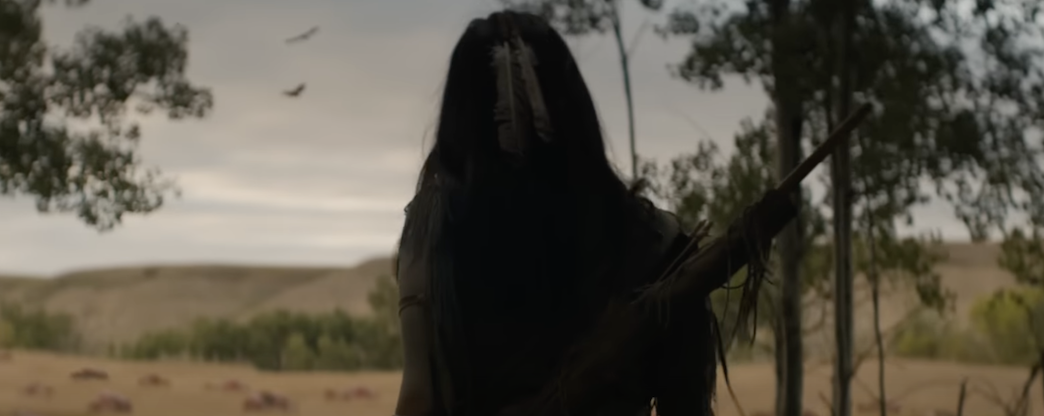One of the biggest movie events of the year (and in recent cinematic history) has been the release of Top Gun: Maverick, which has wowed critics and audiences alike while grossing almost $1.5 billion US worldwide and still counting. Some of the most exhilarating footage ever put to a blockbuster film, along with brand recognition and an aggressive marketing campaign are amongst the key reasons for its success, but what many noted – and word of mouth certainly helped – is just how vast an improvement the sequel is over its 1986 predecessor, despite the 36-year gap.
While Top Gun: Maverick is deserving of the praise, there is a difference between a movie that languishes in development hell for decades before landing on its feet to great success, and a movie that can rise above years of mediocrity within its franchise to produce a prequel that not only offers long overdue justice to the roots of said franchise, but is a solid movie in its own right.
I am, of course, referring to Dan Trachtenberg’s Prey.
However, before delving into what makes Prey such a strong entry in the Predator franchise, it’s essential to first look at what came before [gulp].
1987’s Predator, directed by legendary action filmmaker John McTiernan, needs little introduction as a classic of the action genre whose reputation has only grown stronger with time. For anyone who might be unfamiliar with the premise of Predator, and indeed the franchise as a whole, the title refers to an alien race of hunters that frequently visit earth to hunt animals and humans who they deem as worthy competition. The original features a group of commandos who encounter this species of alien while conducting a rescue mission in South America, a structure from which some of the sequels will loosely borrow in the future.
From here the franchise spirals into an era of mediocrity that endures for the next thirty years, with three sequels and two spin-offs all widely missing the mark.
First there’s Predator 2 starring Danny Glover in 1990, which is probably the strongest of all these three sequels (it’s a relatively low bar), using its concrete jungle setting of Los Angeles to deliver some effective scares along with the action, even if it pales in comparison to the original. The next sequel, Nimród Antal’s Predators, would not release until 20-years later in 2010, a movie that has more than a few parallels to James Cameron’s Aliens, which also pluralises its original movie, as well as landing a group of killers onto an alien planet populated by the titular creatures. Finally, we have 2018’s The Predator, which is not only another case of inspired titling, but was co-written and directed by the very talented Shane Black (who, as it happens, had a notable role as Hawkins in the original movie) with an equally talented cast, making the utter ineptitude of this sequel all the more baffling.
This is all without even mentioning the spin-offs. Remember how I just compared Predators to Aliens? Well, sadly the comparison was not lost on studios either, even before Aliens’ story concept was copied and pasted, because prior to Predators and The Predator came (queue the “Oohs” and “Ahhs,” please) Alien vs. Predator and its sequel Requiem. It’s bad enough when you try to ruin one beloved franchise, never mind two twice over!
Suffice to say, Prey (which is an actual case of inspired titling) had a lot going against it historically. This made its 1719 America setting (which was shot in Calgary) focusing on a Comanche tribe an immediately promising step in the right direction for the franchise, as it is not beholden to anything that came before. This solid foundation gave way to what is an expertly directed, strongly written, and intuitively performed showpiece for how to do a Predator movie right…just 35 years after the fact.
Present is the emotional core its predecessors lacked, buoyed by a standout performance from lead actress Amber Midthunder, who is not only convincing from a dramatic standpoint, but owns each and every action scene she’s in, conveying a self-assuredness in her abilities without devolving into an implausible action heroine. This is partly achieved by hearkening back to the original – something that the sequels have revelled in doing previously – yet here it’s much more cerebral, in the sense that much like Arnold Schwarzenegger’s Dutch, Midthunder’s Naru relies as much on her wits as her physical prowess, not to mention how she cleverly uses the environment to her advantage. The movie’s casting of Native Americans for Native American roles also deserves special recognition.
Prey is not without its minor issues, namely the pacing in the first half as it teases much of what we already know, but the dramatic elements work, and once the second half kicks into full Predator-on-human action, Prey establishes itself as the most creative and engaging entry in the franchise, bar the original.
Let’s just hope that this is a sign of what’s to come for the reinvigorated Predator franchise.

